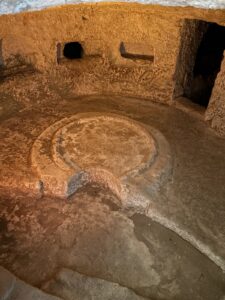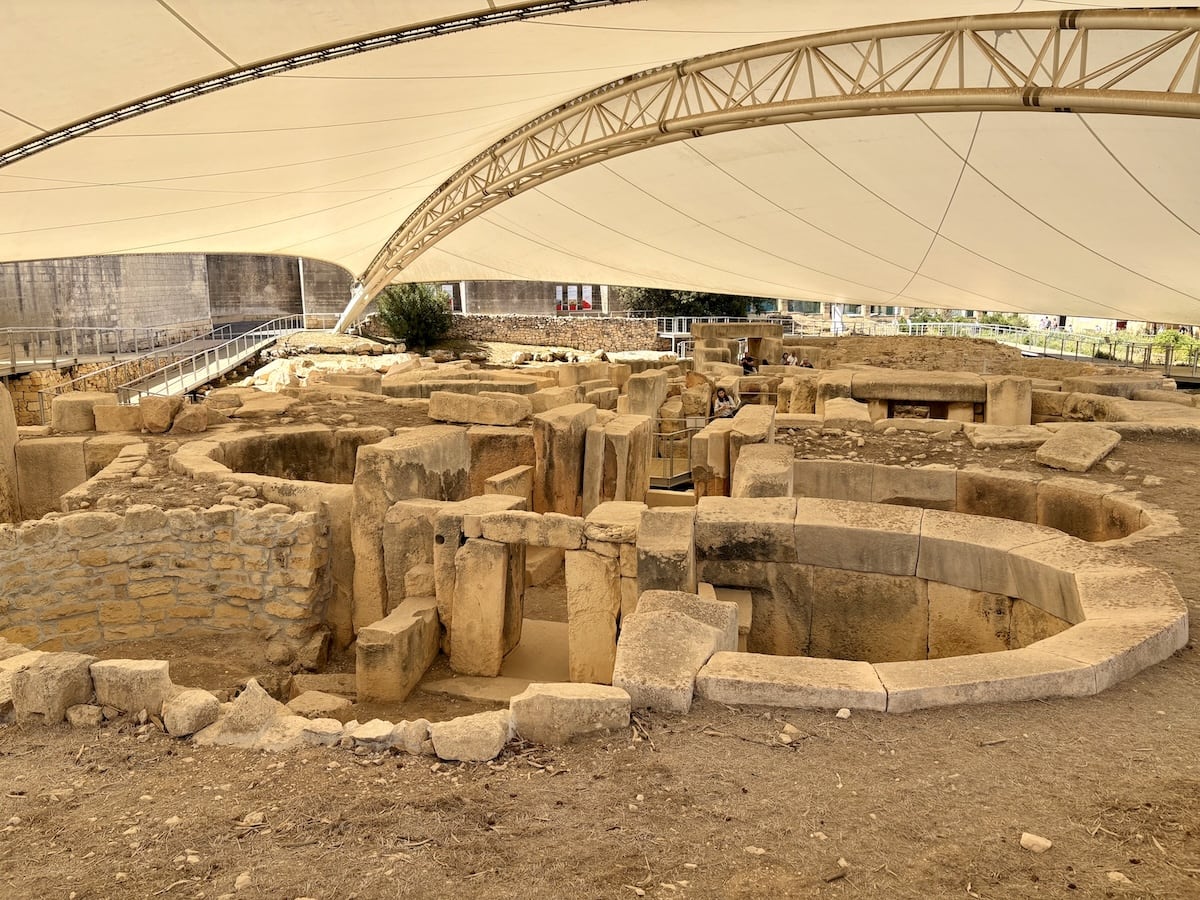St. Paul’s Catacombs lie in Rabat, on the outskirts of Mdina, and serve as a fascinating gateway to Malta’s early Christian and late Roman history.
Hidden beneath the bustling streets, these underground burial chambers reveal how different religious communities coexisted, particularly during the 3rd and 4th centuries AD. The sprawling complex includes a maze of corridors and tombs, some of which still bear the remains of ornate carvings and symbolic motifs.

Whether you’re visiting for the first time or returning to deepen your understanding, the site offers an immersive journey into a lesser-known chapter of the island’s past.
Named after a shipwrecked apostle
Archaeologists attribute the name of the catacombs to the island’s enduring connection with St. Paul, who, according to tradition, was shipwrecked in Malta around 60 AD and brought Christianity to its shores. While St. Paul’s direct link to these catacombs is more historical homage than proven fact, the complex nonetheless reflects the spiritual evolution that took hold in Malta following the spread of Christianity. The catacombs also show evidence of Jewish and pagan burials, hinting at a surprisingly diverse community that utilized shared spaces for funeral rites and commemorations. This mosaic of beliefs can still be detected in the layout and design of certain crypts.
Mourning, burying and honoring the dead
 Visitors can navigate walkways that reveal clustered tombs of varying sizes, along with larger chambers designed to accommodate groups during funerary gatherings. Some of these spaces feature the distinctive “agape tables,” semicircular stone benches where mourners would share a ritual meal. These remnants add a human dimension to the catacombs, reminding us that this was more than a burial site; it served as a communal place where the living honored the dead. The temperature underground remains cool and stable, providing a respite from Malta’s Mediterranean heat while you explore corridors that have remained relatively unchanged for centuries.
Visitors can navigate walkways that reveal clustered tombs of varying sizes, along with larger chambers designed to accommodate groups during funerary gatherings. Some of these spaces feature the distinctive “agape tables,” semicircular stone benches where mourners would share a ritual meal. These remnants add a human dimension to the catacombs, reminding us that this was more than a burial site; it served as a communal place where the living honored the dead. The temperature underground remains cool and stable, providing a respite from Malta’s Mediterranean heat while you explore corridors that have remained relatively unchanged for centuries.
Protecting the past
From the outside, the entrance might seem unassuming, but once you descend the steps into the subterranean world, the sheer scale of the network becomes apparent. Interpretive signs guide new visitors through the winding passages, explaining how the catacombs were carved out of soft limestone and later expanded to meet growing communal needs. Heritage Malta, the agency responsible for preserving the site, has taken steps to protect the fragile walls and carvings through controlled lighting and ventilation. This careful management allows tourists and researchers alike to appreciate the intricate tomb layouts without causing undue damage to the ancient stone.
For those returning to St. Paul’s Catacombs, periodic updates and archaeological finds ensure that no two visits are exactly the same. Small sections may open for limited times while researchers conduct deeper studies, and new insights often emerge about the site’s role in Malta’s social and religious history. Even simply retracing familiar paths can bring fresh discoveries—perhaps noticing a subtle carving previously overlooked or reflecting on how different funerary practices overlapped in these underground chambers.
Strategic location
St. Paul’s Catacombs also connect to a broader history tied to the nearby Roman city of Melite, which once encompassed much of present-day Mdina and Rabat. Traces of this ancient urban center enrich the narrative of the catacombs, demonstrating how Malta’s strategic location and cultural exchanges influenced local customs. Over the centuries, the catacombs fell into obscurity, used occasionally as shelters or storerooms, until modern excavations uncovered their true significance. This rediscovery ignited interest among historians and tourists alike, positioning the catacombs as a vital piece of Malta’s heritage puzzle.
A time capsule worth a visit
A visit here can feel like stepping into a time capsule, evoking questions about life and death, faith and tradition. The silence of the underground corridors offers a stark contrast to the lively streets above, prompting many to pause and consider the layers of human activity that have shaped Malta’s character. The catacombs bear witness to centuries of transition—from pagan rites to early Christian customs—and remain a quiet testament to the island’s resilience and cultural depth. As you emerge back into the Maltese sunlight, the echoes of this ancient world linger, reminding you that Malta’s past is never far beneath its surface.
All information about visiting, opening hours and ticket prices can be found on the dedicated website of Heritage Malta.


